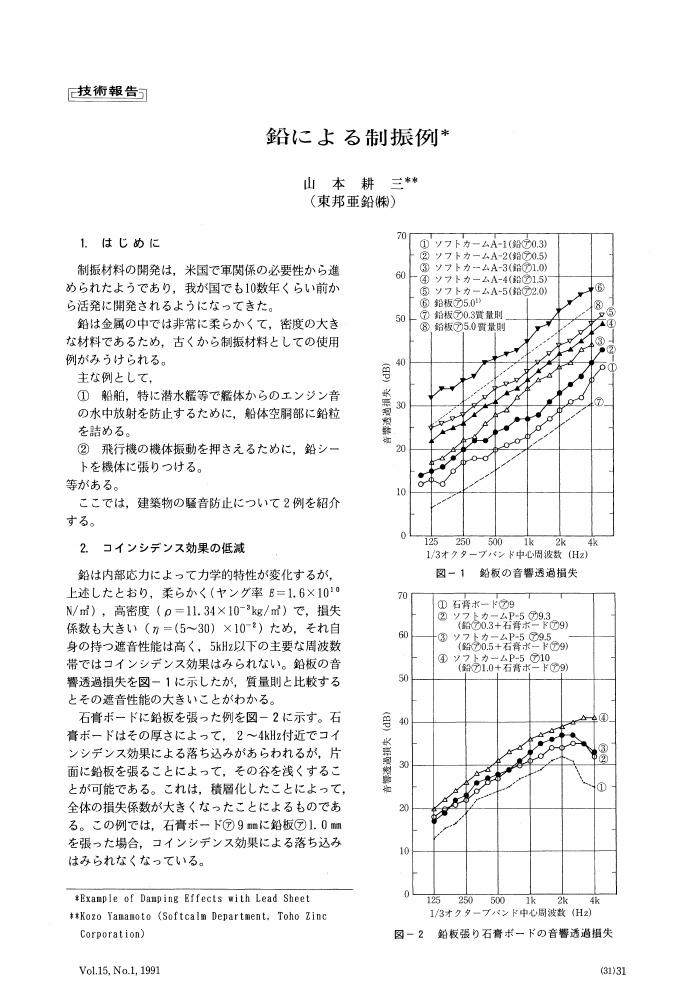42 0 0 0 OA 新広島空港の開港に伴う現広島空港の存続問題
- 著者
- 山本 耕三
- 出版者
- 北海道地理学会
- 雑誌
- 北海道地理 (ISSN:02852071)
- 巻号頁・発行日
- vol.1993, no.67, pp.19-25, 1993-04-30 (Released:2012-08-27)
- 参考文献数
- 7
2 0 0 0 IR 北海道陸別町からみた結節地域
- 著者
- 山本 耕三
- 出版者
- 熊本大学
- 雑誌
- 熊本大学教育学部紀要. 自然科学 (ISSN:04546148)
- 巻号頁・発行日
- vol.60, pp.91-98, 2011-12-12
Rikubetsu Town is the periphery of the two center: Obihiro City and Kitami City. We measured that how thetown depend on the two center. The results are as follows: Rikubetsu belongs to the Ashoro Town commuter area. Thus, in the commuter, Rikubetsu has links with the Tokachi region. Similarly, in visiting relatives and friends, Rikubetsu has strong links with the Tokachi region. On the other hand, Rikubetsu belongs to the Kitami trading area and medical care zone. Rikubetsu residents, as well as shopping goods, which depend on grocery shopping in Kitami. In conclusion, Rikubetsu has traditionally stronger ties between Tokachi region. However, because of motorization and changes in retailers, in some aspects, Rikubetsu became positioned on the periphery of Kitami.
2 0 0 0 大正・昭和初期の名古屋における物資の移出入について
- 著者
- 山本 耕三
- 出版者
- 地理科学学会
- 雑誌
- 地理科学 (ISSN:02864886)
- 巻号頁・発行日
- vol.48, no.2, pp.59-76, 1993
This paper describes the domestic commodity traffic to and from Nagoya during the early stage of industrialization in Japan (from Taisho era to early Showa era, 1920s and 1930s), focussing on the existence and the expansion of the Chukyo-sphere and the fluctuation of the in- and out-freight area each of 53 items during this period. Nagoya was a large castle town during Tokugawa era, but its economic sphere of influence was confined within its territorial area, while Edo (Tokyo) and Osaka were already retaining the nation-wide market. The author revealed the Chukyo-sphere had grown up to one of the three metropolitan areas in 1922, through an analysis of the domestic freight dealt with Nagoya at this period, comparing that of Tokyo and Osaka. Secondly, the author investigated the fluctuation of the in- and out-freight area each of 53 items in 1922 and 1937. In addition, freight volume and transport distance of 53 items categorized in the freight were investigated using regression analysis. By 1922, Nagoya had already grown up to one of the three metropolitan areas, although its hinterland called Chukyo-sphere, was smaller in area comparing with that of Tokyo and Osaka. Nagoya got a firm market for out-flow commodities in Nagano, Gifu and Aichi Prefectures, while Shizuoka Prefecture remained as a competitive area with Tokyo, and Mie Prefecture with Osaka (Fig. 1). On the other hand, Gifu, Aichi and Mie Prefectures were included as the hinterland of Nagoya for in-flow of commdities (Fig. 2). As for the out-flows of the commodities in 1922, rice, wood and most of industrial items were transported nation-wide. Most of agricultural products were distributed Inside Honshu. Stone and gravel were scarcely transported from the city (Table 3). In terms of in-flow of commodities, most of agricultural products were gathered from Hokkaido and Honshu, while most of industrial items from Honshu and Kyushu (Table 5). Transport distance and freight volume are usually explained by the gravity model, and the less volume is transported for the longer distance. However, this was not always the case for the commodity flows to and from Nagoya known from in- and out-freight items in 1922 (Tables 4 and 6). Flows of agricultural products and heavy low-priced raw materials generally showed higher distance resistance among in-freight items. On the other hand, flows of fuel showed less or no distance resistance among in-freight items, and that of machinary among out-freight items. The year of 1937 was one of the years which Japan enjoyed the highest industrial production before World War II. In this year, flows of many commodities indicated large expansion of market comparing that of 1922 (Fig. s 3 and 4, Tables 7 and 8). As shown in out-flow of many items increased their markert, suggesting that Nagoya, at this period, made a firm foundation as one of the three metropolitan area in Japan. However, certain flows such as that of out-flow of fuel indicates the city lost its hinterland. The reason for this case, Nagoya lost Shizuoka Prefecture as its hinterland because of the development of Shimizu Port, and going into shifts unloading fuel port for the demand of Shizuoka Prefecture to Shimizu Port.
1 0 0 0 OA 鉛による制振例
- 著者
- 山本 耕三
- 出版者
- The Institutew of Noise Control Engineering of Japan
- 雑誌
- 騒音制御 (ISSN:03868761)
- 巻号頁・発行日
- vol.15, no.1, pp.31-34, 1991-02-01 (Released:2009-10-06)
- 参考文献数
- 5

